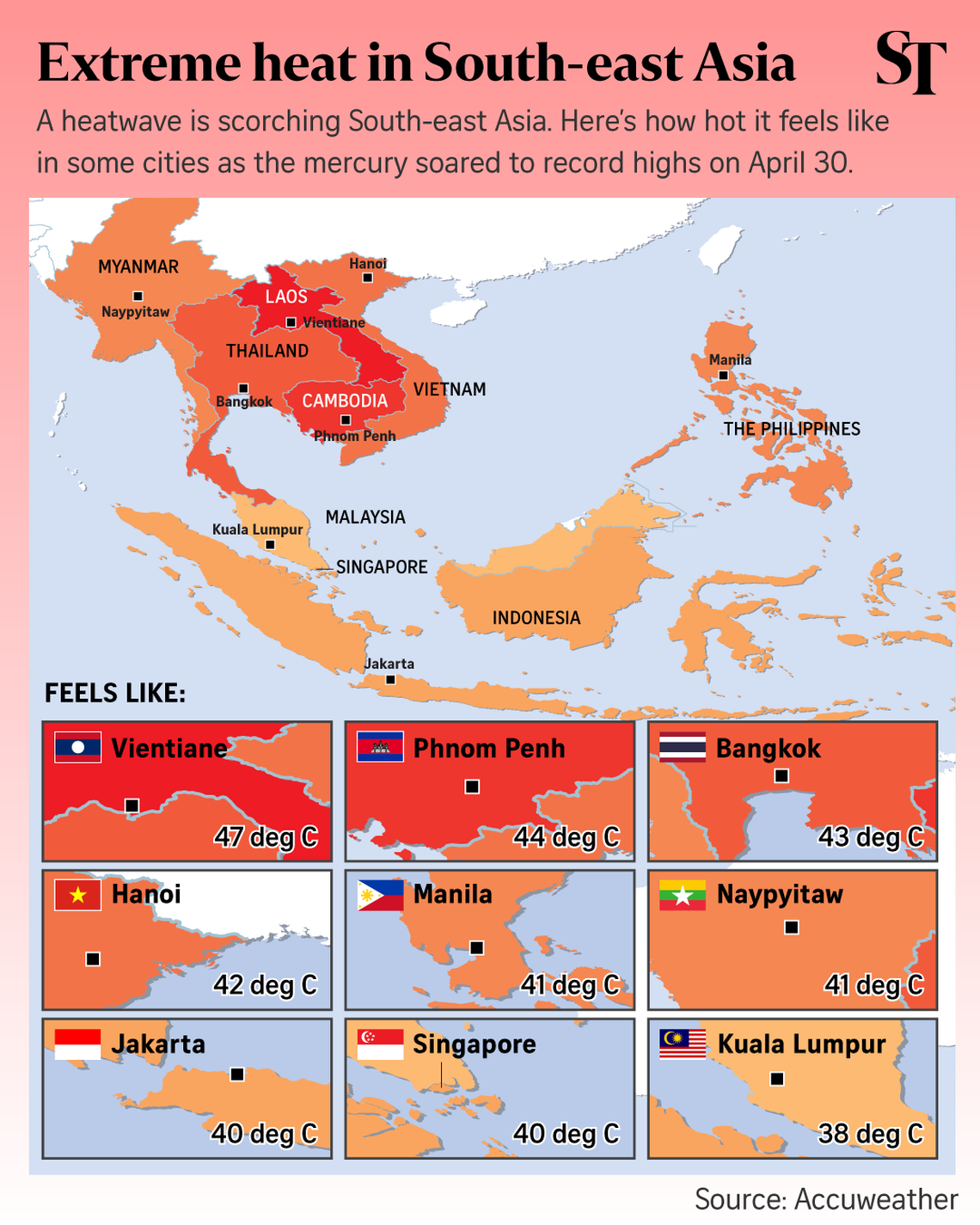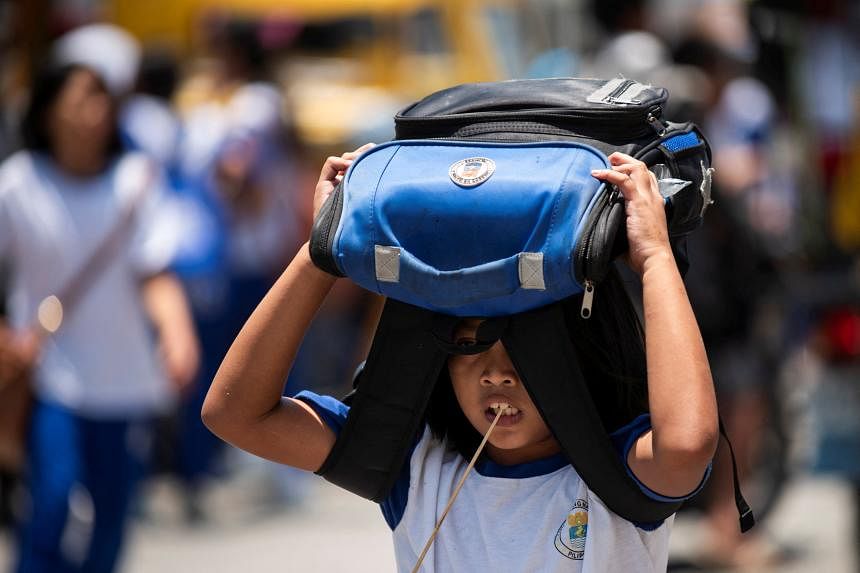BANGKOK – Large swaths of Asia are sweltering through a heatwave that has topped temperature records from Myanmar to the Philippines and forced millions of children to stay home from school.
Here are some questions and answers about the extreme heat, which scientists warn will become more frequent and intense because of human-induced climate change.
Which areas are affected?
The heat has hit much of South Asia and South-east Asia, with record temperatures in Myanmar’s Chauk and the Philippine capital Manila in recent days.
The Thai authorities have issued warnings about “severe conditions”, while the authorities in Cambodia, Myanmar, Vietnam, India and Bangladesh all forecast temperatures above 40 deg C.
The Philippines and Bangladesh have both suspended in-person classes, while India is reviewing whether heat has affected turnout in national elections.
Even northern Japan has been affected: temperatures in Japan’s Sapporo in April passed 25 deg C at the earliest point of any year on record.
What is causing the heat?
The months preceding the region’s monsoon, or rainy season, are usually hot, but temperatures in 2024 are well above average in many countries.
Experts say climate change is causing more frequent heatwaves that are more intense and last longer.
Asia is also warming faster than the global average, according to the World Meteorological Organisation, a UN agency.
And the El Nino weather phenomenon is playing a role in 2024, said Dr Milton Speer, a meteorologist and visiting research fellow at the University of Technology Sydney.
“The lack of cloud in El Nino means that temperatures are likely to be higher on average,” he told AFP.
Sea surface temperatures in the region are currently several degrees Celsius above normal, “which helps keep the temperatures higher than average inland overnight”.
“So daytime temperatures start climbing from a higher base.”
There are other factors at play too, including deforestation that reduces shade and increases dry surface area, and the urban heat island effect, where concrete, glass and steel structures absorb rather than reflect heat.
Who is affected?
Extreme heat disproportionately affects children, the elderly and those living in poverty.
Children, older people and those with pre-existing conditions or disabilities can overheat more quickly.
Those living in poverty also often lack cooling solutions at home or are forced to work in conditions without adequate heat protection.
The UN children’s agency Unicef warned this month that 243 million children across the Pacific and East Asia are at risk from heatwaves.
“Child exposure to heatwaves leads to heat stress,” said health specialist for Unicef’s regional East Asia and Pacific office Salwa Aleryani.
“Severe issues can develop, such as cardiovascular diseases, organ failure, muscle and nerve dysfunction,” she told AFP.

How have countries reacted?
The authorities in several countries asked citizens to stay at home. Hospitals in Nepal were put on standby, while Cambodian officials asked public schools to keep doors and windows open for ventilation.
Measures went further in Bangladesh and the Philippines, with schools closed for days.
But many children will not have cooler conditions at home, warned Ms Aleryani.
They may also be left unsupervised by parents who cannot afford to stay home from work, and risk serious interruptions to their education,
How long will the heat last?
The heat in Bangladesh is not expected to recede until May 2 at the earliest, and in Thailand, forecasters warned that annual rains may arrive in late May, several weeks later than normal.
Dr Speer said the overall warming trend will continue even when the region’s monsoon arrives to lower temperatures.
“Heatwaves will continue to happen more often because the oceans and atmosphere are gradually heating up due to global warming,” he said.
That in turn poses growing risks to crops and livestock, as well as humans whose jobs require them to work outdoors.
Adaptation will be crucial, including offering “sustainable neighbourhood structures with air-conditioning where people could go during the day and sleep at night”, Dr Speer said. AFP

